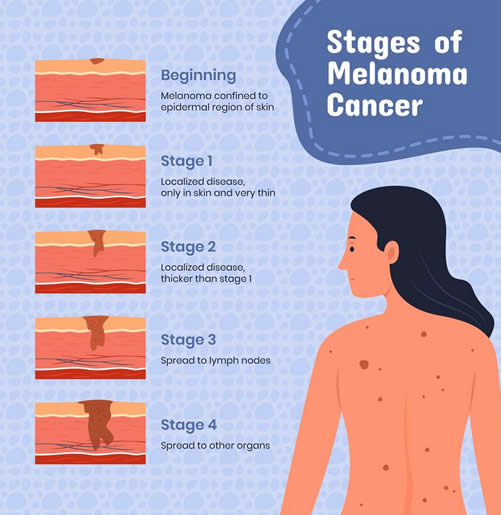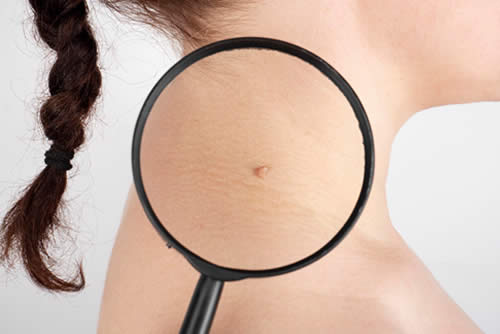Melanoma is the most severe type of skin cancer, although it is a preventable and curable form of cancer. The key is detecting it early and getting proper treatment right away. Affecting both men and women, melanoma’s ability to spread to other parts of the body makes it very dangerous. The good news is that melanoma treatment can be highly successful if the cancer is diagnosed in its early stages.
Candidates
Any person no matter their age, gender or race can develop melanoma. There are certain risk factors however that increase one’s risk for this type of cancer. Fair-skinned people, those who have many moles, or those who have extensive sun exposure are all at higher risk. Melanoma in the back and neck are especially common for people in these categories. Dark skinned people are at lower risk, although may develop melanoma in area like palms, foot soles, or under the nails. Additional risk factors include tanning bed use, a significant history of sunburns, or a family history of melanoma.
Self-examination
A great way to monitor your health is to perform regular checks of your own skin. Being familiar with your moles, freckles, lesions or other skin blemishes is helpful in recognizing changes to your skin. Monthly skin self-examinations are ideal and should be performed in front of a mirror in a lighted area. Examine all parts of your body and enlist the help of family or friends to look at hidden areas. If you notice any new or changing spots, schedule an appointment to be seen soon by a board-certified dermatologist like Dr. Raskin in Porter Ranch.

The ABCDE Method
A common method in dermatology for detecting melanoma is referred to as the ABCDE method. This means monitoring skin lesions for the characteristics of asymmetry, border, color, diameter, and evolving (changes in shape, color or size).
Doctor examination
Regular skin checkups by a qualified dermatologist such as Dr. Bernard Raskin can make a big difference in detecting melanoma early. These exams are very important for those at higher risk for the disease, but everyone should get annual skin checkups for ideal care. If your physician is concerned about a mole or other spot, a biopsy may be performed in which a small piece of the lesion is removed and sent to a lab for examination. If further testing or treatment is advised, you will have the best chances for full recovery by catching melanoma early and treating it correctly.



